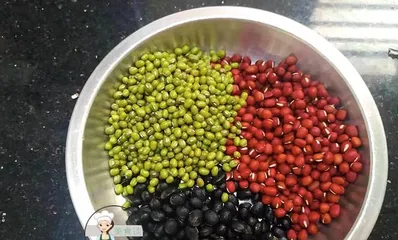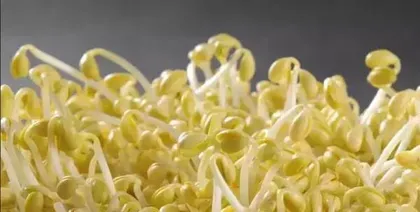Mung bean is a common food crop with high nutritional value, hailed as "a fine ingredient for pastries". However, for mung beans to grow strong, proper care is crucial. Many newcomers to bean cultivation are unaware of the necessary techniques, leading to unhealthy growth or death of the beans. Here, I will introduce the watering techniques for mung beans in spring, summer, autumn, and winter to help them grow strong.

I: Spring Watering Timing
In spring, as the temperature gradually rises and there is abundant sunlight, it is suitable for mung beans to germinate. During this period, water should be applied once in the morning and once in the evening to maintain soil moisture and increase the roots' ability to absorb water.
II: Summer Watering Timing
Summer is the fastest growing season for mung beans, requiring more water. It is recommended to water in the morning or evening to avoid the midday sun drying out the soil. If possible, water twice a day during the summer.

III: Autumn Watering Timing
In autumn, as the temperature gradually decreases, frequent watering is not advisable. At this time, the frequency of watering should be appropriately reduced while keeping the soil moist. If the soil is too dry, add water moderately.
IV: Winter Watering Timing
Winter is the dormant period for mung beans and also the season when pests and diseases are most likely to occur. During this period, the frequency of watering should be reduced, and the soil should be kept moderately moist to prevent the roots from losing water.
V: Spring Precautions
Spring is a crucial period for the growth of mung beans, and attention must be paid to preventing pest and disease infestations. Especially right after germination, observe for the appearance of pests like aphids and take timely measures.

VI: Summer Precautions
Summer is the fastest growing season for mung beans and also the time with the most pests and diseases. During this period, it is necessary to strengthen pest and disease control, using some natural pesticides, such as chili water or garlic water.
VII: Autumn Precautions
Autumn is the season when mung bean growth stops, but pest and disease prevention work still needs to be strengthened. At this time, you can use some green and environmentally friendly pesticides, such as wood vinegar and lime sulfur mixture.
VIII: Winter Precautions
Winter is the dormant period for mung beans, requiring moderate temperature and humidity. During this period, the soil moisture should be maintained, but do not overwater to prevent the breeding of pests and diseases.
IX: Check Soil Moisture Before Watering
Before watering, check the soil moisture first. If the soil surface is already dry, insert a finger into the soil. If it feels moist, then watering is not necessary.
X: Watering Methods
Pay attention to using the correct method for watering. Use a watering can or a sprinkler with a fine nozzle, and water gently from the soil surface until the water penetrates deep into the soil.
XI: Avoid Overwatering
Overwatering can cause the roots of mung beans to become oxygen-deprived and rot, affecting growth. Avoid watering too much when you water.
XII: Pay Attention to Drainage
After watering, if the soil cannot drain in time, it is easy to cause waterlogging, leading to oxygen deprivation and root rot in mung beans. After watering, clean up the accumulated water in a timely manner.
XIII: Pay Attention to Maintaining Air Circulation
The growth of mung beans requires sufficient oxygen and carbon dioxide. In the process of caring for mung beans, pay attention to maintaining air circulation and avoid piled-up and airtight environments.
XIV: Pay Attention to Fertilizer Application
A moderate amount of fertilizer can promote the growth of mung beans, but excessive application will cause the soil fertility to be too high, which is detrimental to the growth of mung beans. When applying fertilizer, pay attention to controlling the amount of fertilizer to avoid excessive application.
XV:
Mung bean is a very easy crop to grow, but many issues need attention during the care process. Through the above introduction, I believe everyone has learned the watering techniques for mung beans in different seasons and other precautions. I hope everyone can reasonably care for mung beans according to their own situation and let them grow strong.